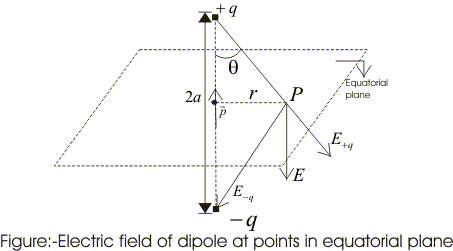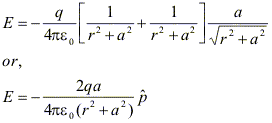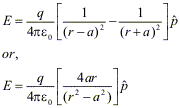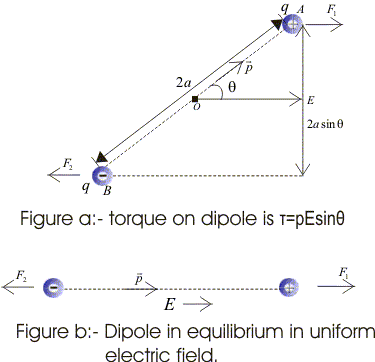







Examples
Question 1
Two point charges q1 and q2are located with points having position vectors r1 and r2
(1) Find the position vector r3 where the third charge q3 should be placed so that force acting on each of the three charges would be equal to zero.
(2) Find the amount of charge q3
Question 2
Consider a thin wire ring of radius R and carrying uniform charge density λ per unit length.
(1) Find the magnitude of electric field strength on the axis of the ring as a function of distance x from its centre.
(2) What would be the form of electric field function for x>>R.
(3) Find the magnitude of maximum strength of electric field.
Question 3
Two equally charged metal balls each of mass m Kg are suspended from the same point by two insulated threads of length l m long. At equilibrium, as a result of mutual separation between balls, balls are separated by x m. Determine the charge on each ball.